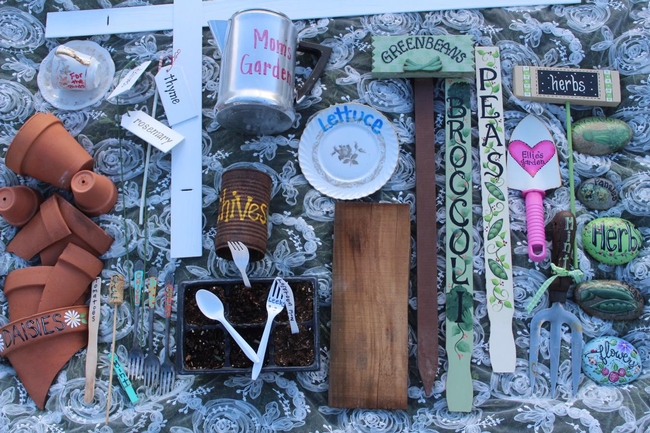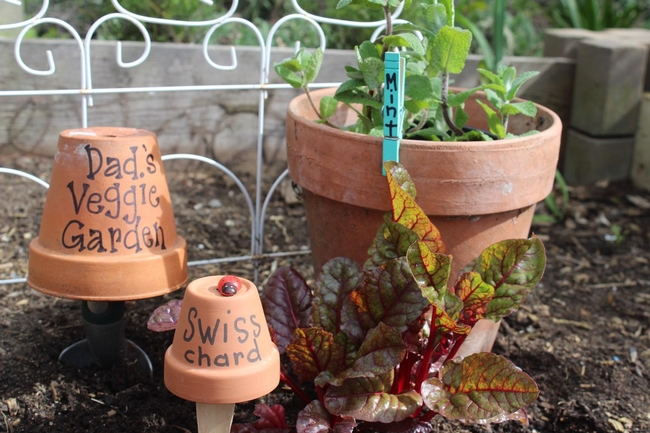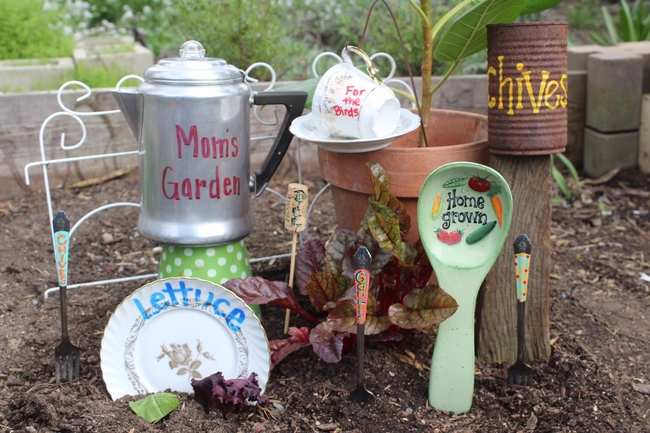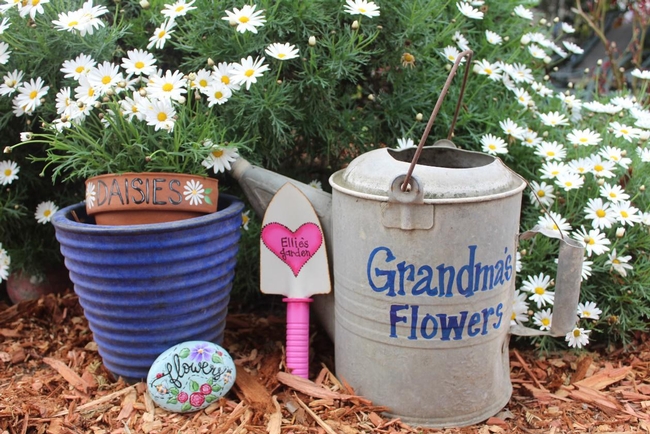

The first point of necessity is when you plant your seeds. The seedlings start to emerge and most times it is almost impossible to identify those tiny leaves. Having them labeled in either the nursery seed starting trays or in the directly-sown garden bed will take the guess work out of it. Use popsicle or tongue depressor sticks, craft sticks, plastic knives/spoons/forks, or reuse the nursery's white plant labels while the little seedlings are taking root. These are very inexpensive and most times reusable. There is plenty of room to add the planting date too.
As the plants grow and are ready to be planted into their place in the garden, larger garden markers will come into play. Here is a list of items to use; it is a great way to recycle things you might otherwise have thrown in the trash and to give them a new purpose.
Broken clay flower pot shards
Clay flower pots used upside-down
Clothespins
Corks
Old retired hand tools
Paint stir sticks
Plastic spoons, forks, and knives
Popsicle or tongue depressor sticks
Rocks and bricks
Vintage dishes and tea cups
Vintage coffee pots
Wood sticks (check your local home improvement store's lumber-cutting department for scrap wood, inexpensive or possibly free)
Window blind slats
Wooden kitchen spoons
The list goes on; use your imagination, and find items that might be perfect for signage while also making whimsical garden décor. The colder winter months are the best time for getting your signs made, so they will be ready for your new spring garden.
Here are some supplies you may need to help you create plant labels: paint and brushes, permanent markers, glue, nails, screws, twine, wire, metal sticks, and any tools you will need. Also, UV varnish is recommended to spray or brush over the painted designs and lettering to help preserve them.
Your creations can be as simple as writing the names on a small wood board to painting creative designs and lettering. Painting carrots, tomatoes, vines, and flowers is simple and makes for a quaint look. It is up to you to choose the style depending on your creative ability, and to decide if you want a plainer look or a fancy creative one.

Wooden stakes and rocks look great together. Or use all clay pots of varying sizes. Turn them upside down, write the name of your plants on them, and place them on a stake.
For a vintage-style garden, look for an old metal watering can. Again, name your garden, “Grandma's Garden” if you wish. Add markers such as vintage metal cans, vintage silverware, or any vintage find that can hold a name.
If you have children or grandchildren, this is a great way to get them interested in gardening. Some kids love to craft, so get them involved in making their own little signs. Small wooden signs and rocks can be painted easily depending on their age. Make a small garden plot and allow them to care for a few plants. A wood sign such as “Ellie's Garden” with her handprint would make any kid a happy gardener. Or give a child a small garden tool with their name on it to decorate their little garden. Transforming a rock into a ladybug or bee is always a fun project for children or even adults. Also, a child's trowel for them to use can be decorated, and do not forget they will need garden gloves.
If you have a grouping or rows of certain vegetables or flowers, paint one larger sign for them. And where there may be only one or two plants, a smaller individual sign can be sufficient.
Check thrift stores and garage sales, or check with family and friends that might be getting rid of things you can recycle.
Have fun creating some garden markers for your plants. When friends visit your garden, the signs will be interesting and educational. Happy gardening!!